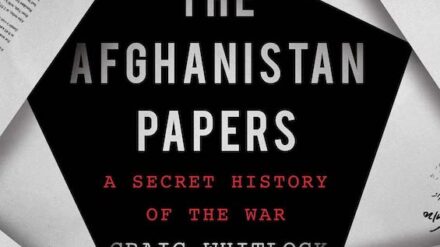
One of democracy’s most remarkable characteristics is the sheer volume of closely guarded information that can be reported and published without ending in jail time or torture for the authors. Counterstrike is a remarkable bit of longitudinal reporting by two veterans of the New York Times, Eric Schmitt and Thom Shanker. The book brings to light a host of insights and behind-the-scene details about the decade-long secret American campaign against Al Qaeda and its affiliates and imitators.
Estimated reading time: 4 minutes
The principal theme of Counterstrike is how in the course of the past decade “the government’s force of professional counterterrorism analysts has grown from a group small enough to know each other’s phone numbers to a vast army linked by supercomputers processing thousands of bits of data in nanoseconds.” And, by no means incidentally, spending tens of billions of dollars in the process.
Schmitt and Shanker reveal without editorial comment the strong contrast between the management styles of our last two Presidents: “While Bush showed an apetite for tactical and operational details — [for example,] the number of spies working against Al Qaeda in Pakistan . . . — Obama wanted to understand the strategic nature of the threat and demanded to know when his personal orders were required to break through resistance across the intelligence and security community to make things work at the tactical and operational level.” The bureaucratic squabbles, most notably during the tenure of Secretary of Defense Rumsfeld, are another theme that stands out.
Counterstrike: The Untold Story of America’s Secret Campaign Against Al Qaeda by Eric Schmitt and Thom Shanker (2011) 336 pages ★★★☆☆
However, the overarching theme of Counterstrike is the gradual maturation of American counterterrorist policy in the opening decade of the 21st Century, shifting gradually from one bent simply on using brute force to kill or capture terrorists to a much more sophisticated and broad-based policy of deterrence drawn from the playbook of the Cold War. As Scmitt and Shanker report, “Deterrence — updated, expanded, even redefined — is now official American policy for countering Al Qaeda and its affiliated terrorist organizations.”
A deep dive into the secret American campaign against Al Qaeda
At first blush, deterrence might seem futile against an enemy willing, even eager, to die for his beliefs. However, as Schmitt and Shanker reveal, there is a wide range of tactics available to delay or prevent terrorist attacks. Among these are multi-faceted techniques such as cyberwarfare to disrupt the communications and financial transactions of the Al Qaeda network and creative actions by local CIA or military officers. (In the most amusing of the latter, American officers first set high bounty prices on Al Qaeda commanders, then lowered them to imply that the terrorists’ importance had declined; soon, to prove their continuing importance, the terrorists revealed their locations by striking out against the Americans in impulsive and foolhardy ways. The result is that they were then either killed or captured.)
So, there is considerable substance in Counterstrike. The discussion of how deterrence policy evolved into the U.S. strategy against Al Qaeda is especially illuminating. Unfortunately, the structure and writing style don’t enhance the reader’s experience. The book is slow going, consisting largely of one long expository paragraph after another, relieved only by lengthy quotes from some of the hundreds of individuals the authors interviewed. Schmitt and Shanker might have benefited from a few lessons in nonfiction writing by a master of the craft such as Tracy Kidder, Erik Larson, or even Bob Woodward.
For additional reading
This is one of 13 good recent books about American foreign policy and of 13 eye-opening books about terrorism. This is also one of the many good nonfiction books about national security reviewed here.
Also, check out Top 10 nonfiction books about politics for more good reading.
You may enjoy browsing through 20 top nonfiction books about history.
For more good books on the history of the US, see Top 20 popular books for understanding American history.
And you can always find my most popular reviews, and the most recent ones, plus a guide to this whole site, on the Home Page.




























live wetten
Hi, can I use your article on my blog with a linkback?
Yes, you may use the article on your blog.